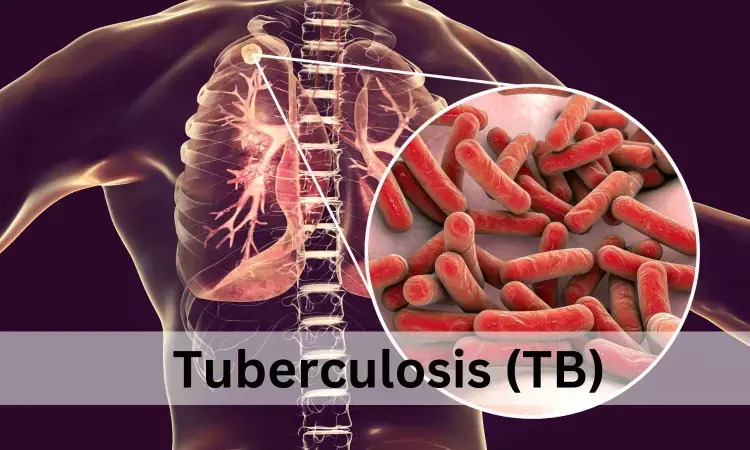- Home
- Medical news & Guidelines
- Anesthesiology
- Cardiology and CTVS
- Critical Care
- Dentistry
- Dermatology
- Diabetes and Endocrinology
- ENT
- Gastroenterology
- Medicine
- Nephrology
- Neurology
- Obstretics-Gynaecology
- Oncology
- Ophthalmology
- Orthopaedics
- Pediatrics-Neonatology
- Psychiatry
- Pulmonology
- Radiology
- Surgery
- Urology
- Laboratory Medicine
- Diet
- Nursing
- Paramedical
- Physiotherapy
- Health news
- Fact Check
- Bone Health Fact Check
- Brain Health Fact Check
- Cancer Related Fact Check
- Child Care Fact Check
- Dental and oral health fact check
- Diabetes and metabolic health fact check
- Diet and Nutrition Fact Check
- Eye and ENT Care Fact Check
- Fitness fact check
- Gut health fact check
- Heart health fact check
- Kidney health fact check
- Medical education fact check
- Men's health fact check
- Respiratory fact check
- Skin and hair care fact check
- Vaccine and Immunization fact check
- Women's health fact check
- AYUSH
- State News
- Andaman and Nicobar Islands
- Andhra Pradesh
- Arunachal Pradesh
- Assam
- Bihar
- Chandigarh
- Chattisgarh
- Dadra and Nagar Haveli
- Daman and Diu
- Delhi
- Goa
- Gujarat
- Haryana
- Himachal Pradesh
- Jammu & Kashmir
- Jharkhand
- Karnataka
- Kerala
- Ladakh
- Lakshadweep
- Madhya Pradesh
- Maharashtra
- Manipur
- Meghalaya
- Mizoram
- Nagaland
- Odisha
- Puducherry
- Punjab
- Rajasthan
- Sikkim
- Tamil Nadu
- Telangana
- Tripura
- Uttar Pradesh
- Uttrakhand
- West Bengal
- Medical Education
- Industry
Cartridge-Based Nucleic Acid Amplification Test may benefit Extrapulmonary Tuberculosis Diagnosis

Tuberculosis (TB) remains a global health concern, with millions of cases reported each year. While pulmonary TB is the most common form, a significant number of cases involve extrapulmonary tuberculosis (EPTB), which presents unique diagnostic challenges due to its varied manifestations and low bacterial load. A recent study published in the Journal Of The Association Of Physicians Of India has highlighted the potential of a new diagnostic tool called the cartridge-based nucleic acid amplification test (CBNAAT) in the early detection of EPTB cases.
Researchers Saswati Chattopadhyay and team conducted a comparative study over eight months at a rural tertiary care hospital in West Bengal, India, to evaluate the efficacy of CBNAAT in diagnosing EPTB. Samples were collected from various sites, including pleural fluid, lymph nodes, cerebrospinal fluid, pus, ascitic fluid, and tissue aspirate. These samples underwent both CBNAAT and smear staining, followed by examination under a fluorescent microscope. Positive samples were further cultured and analyzed.
The findings of the study were:
● A total of 593 samples from different extrapulmonary sites were analyzed during the study period, with lymph node samples being the most prevalent.
● Among the lymph nodes, the cervical lymph node was the most affected site, followed by the axillary and inguinal nodes.
● Results showed that CBNAAT detected Mycobacterium tuberculosis (MTB) in 52 cases (8.77%) of the samples, while Ziehl–Neelsen stain identified acid-fast bacilli (AFB) in 21 samples (3.5%).
● Fluorescent stain detected AFB in 33 samples (5.56%), and culture on Lowenstein–Jensen media yielded positive results in 41 cases (6.9%).
● CBNAAT demonstrated higher sensitivity compared to smear microscopy, as it accurately detected MTB DNA in samples that were falsely declared negative by traditional staining methods.
● Comparing CBNAAT with Ziehl–Neelsen smear, the sensitivity was 100%, indicating that CBNAAT identified all true positive cases, while the specificity was 94.58%.
● In comparison with fluorescent microscopy (FM) smear, CBNAAT also exhibited a sensitivity of 100% and a specificity of 96.6%.
● When compared with culture results on Lowenstein–Jensen media, CBNAAT demonstrated a sensitivity of 100% and a specificity of 98%.
● The analysis of gender distribution revealed that CBNAAT-positive samples were more prevalent in females (27) than males (25), with a ratio of 1:08.
● Regarding age groups, the highest number of positive cases was found in the 21–30-year age group (32.70%), followed by the 31–40-year age group (17.31%).
● Of the 52 CBNAAT-positive samples, six showed resistance to the antibiotic rifampicin (RIF), indicating the presence of multidrug-resistant tuberculosis (MDR-TB). The remaining 46 samples did not exhibit RIF resistance.
These findings underscore the effectiveness of CBNAAT as a valuable diagnostic tool for EPTB. By accurately identifying MTB DNA in paucibacillary samples, CBNAAT provides a rapid and reliable method for early detection of EPTB cases, enabling prompt initiation of appropriate treatment. The high sensitivity and specificity observed in this study further support the use of CBNAAT as a valuable tool in the diagnosis of extrapulmonary tuberculosis.
Further research and implementation studies are warranted to assess the scalability and cost-effectiveness of CBNAAT in different healthcare settings. The integration of this rapid and accurate diagnostic test into routine clinical practice could significantly enhance the global efforts to combat tuberculosis, especially in regions heavily affected by EPTB.
Reference:
Chattopadhyay S, Biswas T, Banerjee A, et al. Diagnostic Approach to Extrapulmonary Tuberculosis by Cartridgebased Nucleic Acid Amplification Test. J Assoc Physicians India 2023;71(6):34–37.
Dr Kamal Kant Kohli-MBBS, DTCD- a chest specialist with more than 30 years of practice and a flair for writing clinical articles, Dr Kamal Kant Kohli joined Medical Dialogues as a Chief Editor of Medical News. Besides writing articles, as an editor, he proofreads and verifies all the medical content published on Medical Dialogues including those coming from journals, studies,medical conferences,guidelines etc. Email: drkohli@medicaldialogues.in. Contact no. 011-43720751


